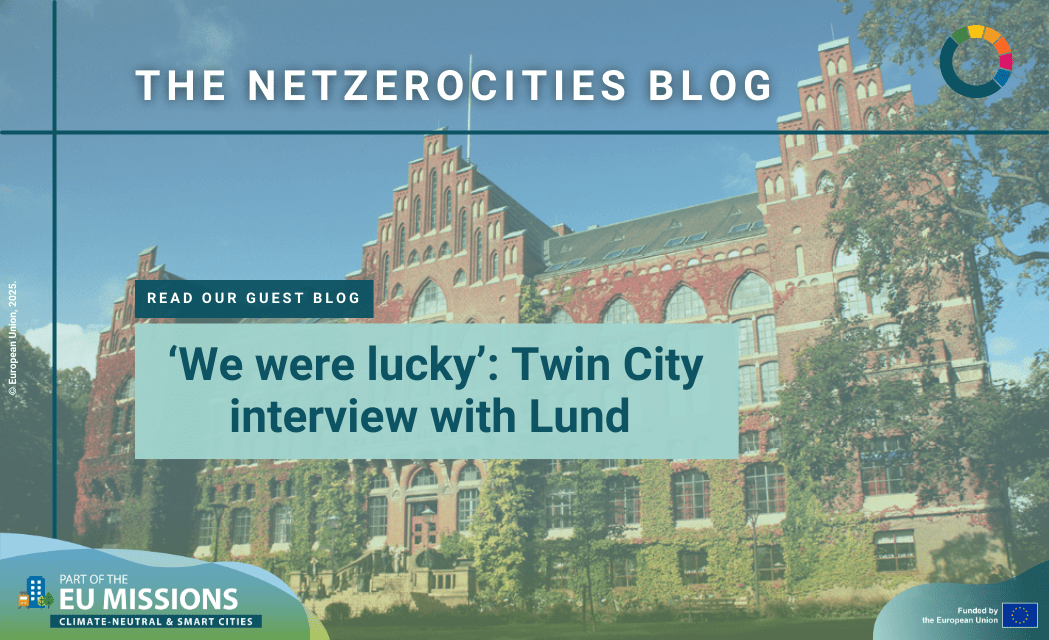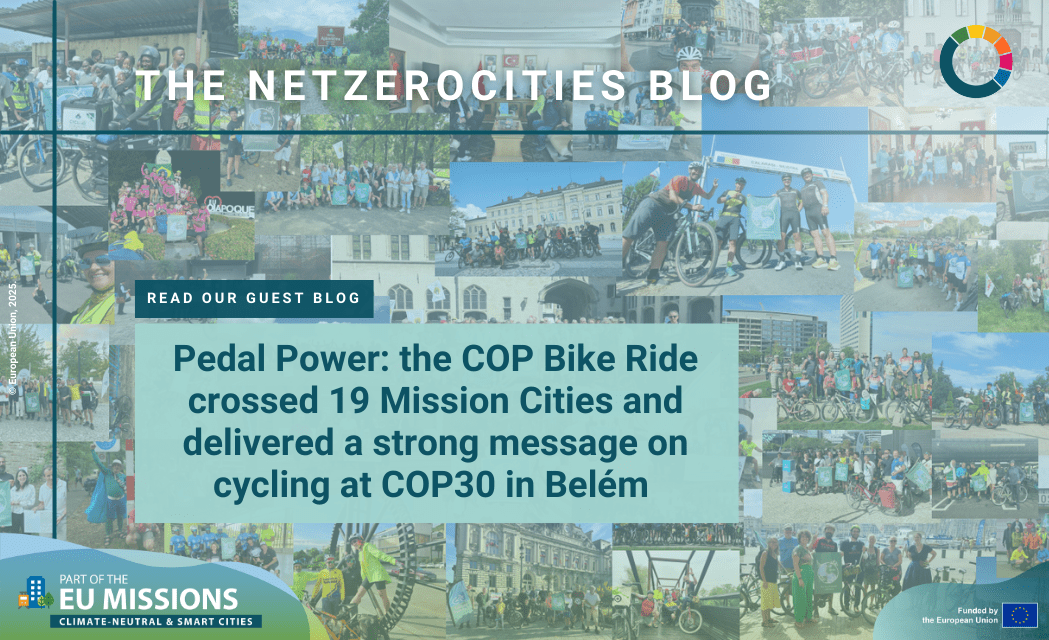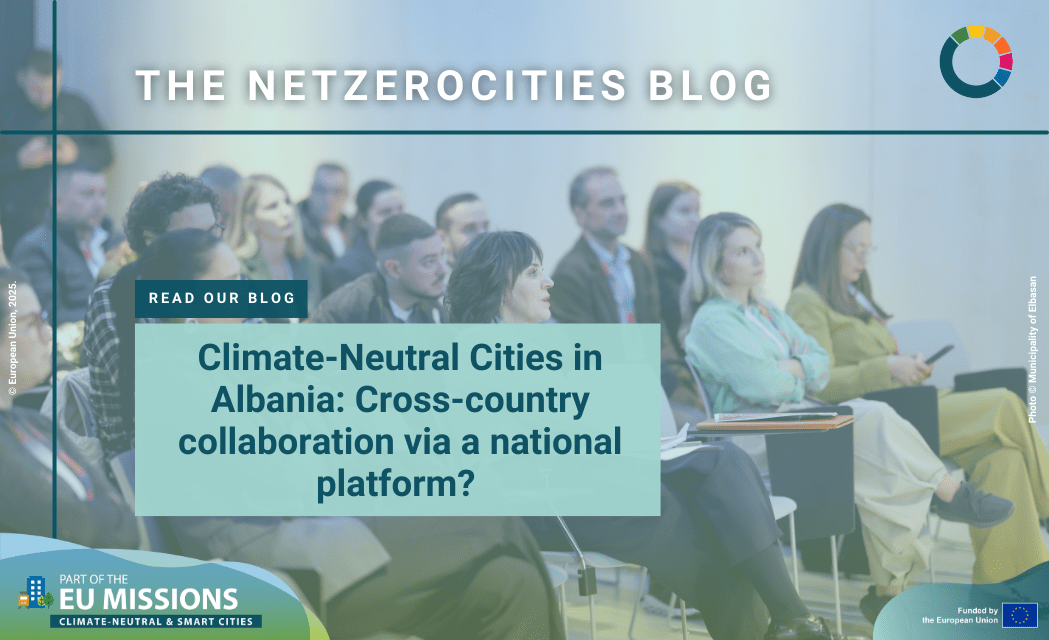Mountains of waste from ‘fast fashion’ have made it a byword for unsustainability – so how are manufacturers adapting to the need to reduce, reuse and recycle when it comes to textiles? Maria Giorda, a city advisor for NetZeroCities, outlines some of the innovative plans of a leading European textile district.
Prato in the Italian region of Tuscany is no stranger to the demands of the textile industry – its manufacturing heritage stretches back to the Middle Ages. Crucially, however, the city’s experience and tradition include not only manufacturing, but innovation and the circular economy.
From the mid-1800s, it created value in fabrics from recycled clothes and manufacturing scraps, laying the foundations for the city as a world leader in the production of carded woollen fabrics. Today, nearly half of the world’s export of these fabrics comes from Prato, of which 80% (28,000 tonnes per year) is from regenerated fibres, making it “one of the most important production hubs in Europe and worldwide for the textile and clothing supply chain,” according to the city, supporting more than 7,000 businesses and nearly 43,000 employees in the area.
Changing the fashion of textile recycling
And Prato’s sustainable innovation will continue with its Net Zero District project. Launched in May as part of the EU Cities Mission, the initiative – to be coordinated by the city and supported by fellow Italian cities of Bergamo, Parma, and Rome – brings together:
- The industrial aqueduct
- Expansion of the sewer system, and
- Water reuse and zero-waste objectives.
The Progetto Acqua consortium of 200 companies will also play a key role, demonstrating that collective infrastructure investment is vital to achieving “zero consumption” water targets.
Tackling textile waste
While the current practice of selecting and treating post-consumer textile waste by hand holds back circular economy goals, a planned innovative new plant could:
- Support mechanical recycling and precise classification of fabrics by fibre type and colour,
- Collect 20,000 tonnes per year of post-consumer textile waste regionally and 13,000 of pre-consumer textile waste (around 50% of the area’s production),
- Install advanced automatic sorting technologies based on Near Infrared (NIR) spectroscopy,
- Have the capacity to sort up to four tonnes per hour.
Fabric of the future
A cooperation agreement between the City of Prato and the Tuscany Region to establish a permanent textile district presence in Brussels – originating from a 2024 mission to the EU capital – will allow Prato to contribute to shaping European policy on eco-design, the digital product passport, and end-of-life textile regulation.
This is more than a lobbying opportunity. For a district producing over 35,000 tons of recycled yarn and 100 million meters of recycled fabric each year, policy coherence isn’t just a compliance issue – it’s a matter of competitiveness and local identity. New EU regulations must reflect the realities and potential of advanced circular systems like Prato’s. Key advocacy areas include extended producer responsibility (EPR), REACH compliance, and support for industrial-scale textile recycling.
The agreement was signed at the Prato Textile District Days (27–28 May 2025), which brought together institutions, businesses, and citizens to reflect, innovate, and commit to a shared climate-neutral and competitive future for Prato’s textile sector.
Soon after, the Prato textile district brought its message directly to the European Parliament, presenting the Identity, Innovation, Sustainability initiative, reinforcing the district’s role as a reference point in European textile policy, and then on to the Textile Recycling Expo (4–5 June), where it showcased its expertise in recycled wool and mechanical processing. Later this year from 4–7 November, Prato will appear as an official exhibitor at Ecomondo, Europe’s leading ecological transition fair.
Innovation in Every Thread: SicurFAD 4.0
The first day of the event also saw the launch of SicurFAD 4.0, a cutting-edge e-learning platform designed to improve occupational safety across the textile supply chain. Developed through the District Roundtable by local tech firms Nume Plus, Technologies 2000, and Flod, the platform offers tailored, multilingual training to meet the district’s complex and multicultural production environment.
Funded through a €10 million national investment package from Italy’s 2022 budget law—with €193,200 allocated to SicurFAD alone—this initiative supports businesses in risk assessment, compliance, and workplace safety. Courses are available in Italian, English, French, Urdu, and Chinese, with interactive content shaped by a pilot phase and extensive user feedback. With more than 150 multimedia resources covering spinning, finishing, mechanical and chemical processing, SicurFAD 4.0 isn’t just a training tool—it’s the foundation of a digital safety culture across the district.
Memory meets modernity
Another standout moment came with the unveiling of Memory and Future, a bilingual catalogue of historical textile archives from Prato’s most emblematic companies. More than a cultural gesture, this initiative reclaims industrial memory as a resource for future innovation. In the patterns, processes, and physical spaces of Prato’s past lies a blueprint for its transformation: a living ecosystem that links heritage to circularity, creativity, and reinvention.
A reusable European model for reusable textiles?
Through collaborative governance and deep industrial knowledge, Prato is not just preparing for the green industrial transition but shaping it. From archival yarns safety e-learning platforms, the district is weaving together a future where circularity, productivity, and sustainability are one fabric.





